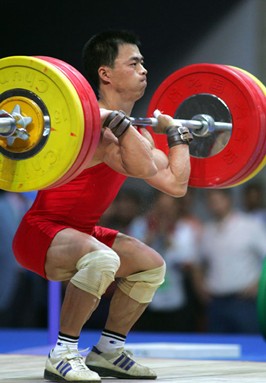考研阅读精选:红色能增强反应的速度和力度
来源:新东方在线
发布时间:2016-12-29
『最新研究发现,当看到红色,人们的反应会变得更快、更有力。』
Color Red Increases the Speed and Strength of Reactions
红色能增强反应的速度和力度
June 6, 2011 | From US News & World Report

What links speed, power, and the color red? Hint: it's not a sports car. It's your muscles.
A new study, published in the latest issue of the journal Emotion, finds that when humans see red, their reactions become both faster and more forceful. And people are unaware of the color's intensifying effect. The findings may have applications for sporting and other activities in which a brief burst of strength and speed is needed, such as weightlifting. But the authors caution that the color energy boost is likely short-lived.
"Red enhances our physical reactions because it is seen as a danger cue," explains coauthor Andrew Elliot, professor of psychology at the University of Rochester and a lead researcher in the field of color psychology. "Humans flush when they are angry or preparing for attack," he explains. "People are acutely aware of such reddening in others and its implications."
But threat is a double-edged sword, argue Elliot and coauthor Henk Aarts, professor of psychology at Utrecht University, in the Netherlands. Along with mobilizing extra energy, "threat also evokes worry, task distraction, and self-preoccupation, all of which have been shown to tax mental resources," they write in the paper. In earlier color research, exposure to red has proven counterproductive for skilled motor and mental tasks: athletes competing against an opponent wearing red are more likely to lose and students exposed to red before a test perform worse.
"Color affects us in many ways depending on the context," explains Elliot, whose research also has documented how men and women are unconsciously attracted to the opposite sex when they wear red. "Those color effects fly under our awareness radar," he says.
The study measured the reactions of students in two experiments. In the first, 30 fourth-through-10th graders pinched and held open a metal clasp. Right before doing so, they read aloud their participant number written in either red or gray crayon. In the second experiment, 46 undergraduates squeezed a handgrip with their dominant hand as hard as possible when they read the word "squeeze" on a computer monitor. The word appeared on a red, blue, or gray background.
In both scenarios, red significantly increased the force exerted, with participants in the red condition squeezing with greater maximum force than those in the gray or blue conditions. In the handgrip experiment, not only the amount of force, but also the immediacy of the reaction increased when red was present.
The colors in the study were precisely equated in hue, brightness, and chroma (intensity) to insure that reactions were not attributable to these other qualities of color. "Many color psychology studies in the past have failed to account for these independent variables, so the results have been ambiguous," explains Elliot.
The study focused exclusively on isometric or non-directional physical responses, allowing the researcher to measure the energy response of participants, though not their behavior, which can vary among individuals and situations. The familiar flight or fight responses, for example, show differing reactions to threat.
课程 文章 问答 资讯 评论 百科
- 比较正规的考研培训机构12-04
- 研究生考试辅导培训课程哪家好12-04
- 考研网络课程哪个比较好12-04
- 考研专业课培训哪个机构好12-02
- 哪个培训班的考研比较好11-29
- 比较靠谱的考研辅导班11-29
- 考研英语一阅读教学视频06-14
- 烟台考研英语辅导06-14
- 考研网课补习班哪个好03-04
- 考研培训班哪家网校好03-04
- 考研辅导视频教程哪个好03-04
- 考研培训机构哪一家好03-04
- 考研培训班哪个机构的好12-04
- 考研网课机构哪个比较好12-04
- 考研专业课辅导班班哪个好12-04
- 网上哪个考研培训班靠谱12-04
- 哪个考研培训机构比较靠谱12-02
- 考研政治课程哪个网课比较好12-02
- 西综考研哪个老师讲得好03-31
- 管综考研哪个老师好03-17
- 护理考研哪个老师讲得好03-16
- 考研政治网课哪个老师好03-16
- 考研数学网课哪个老师讲得好03-15
- 考研英语网课哪个老师好03-14

